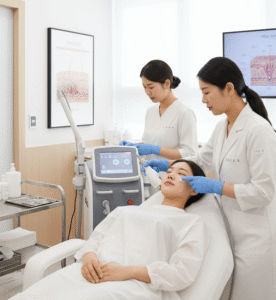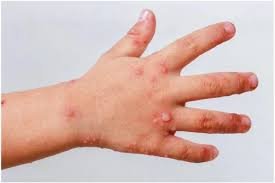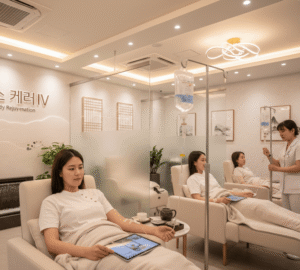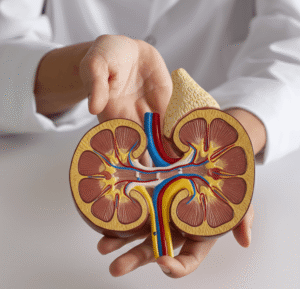Overview
Duchenne Muscular Dystrophy (DMD) is a severe genetic disorder characterized by progressive muscle weakness and degeneration. In South Korea, DMD is one of the most common inherited neuromuscular diseases affecting boys. Advances in early diagnosis, multidisciplinary care, and emerging therapies have improved life expectancy and quality of life for patients.
What is Duchenne Muscular Dystrophy?
DMD is caused by mutations in the DMD gene on the X chromosome, leading to absence or deficiency of dystrophin, a protein essential for muscle stability. It primarily affects boys, with symptoms usually appearing between ages 2 and 5. Progressive muscle wasting often leads to mobility issues, respiratory complications, and cardiomyopathy.
Symptoms
Common signs and symptoms of DMD include:
- Delayed motor milestones (walking, running)
- Frequent falls and difficulty climbing stairs
- Gower’s sign (using hands to rise from the floor)
- Muscle pseudohypertrophy, particularly in calves
- Fatigue and muscle pain
- Respiratory difficulties in later stages
- Cardiac problems such as dilated cardiomyopathy
Causes
DMD is caused by mutations in the DMD gene, which result in the absence of functional dystrophin. This protein deficiency destabilizes muscle fibers, making them prone to damage and progressive degeneration. The disease is inherited in an X-linked recessive pattern, affecting mostly males while females can be carriers.
Risk Factors
Factors associated with DMD include:
- Being male (X-linked inheritance)
- Family history of DMD
- Genetic carrier status in females
Complications
Without proper care, DMD can lead to:
- Loss of independent mobility, often by early teens
- Respiratory failure due to weakened muscles
- Cardiomyopathy and heart failure
- Scoliosis and skeletal deformities
- Reduced life expectancy if untreated
Prevention
DMD cannot be prevented due to its genetic nature, but preventive strategies include:
- Genetic counseling for families with a history of DMD
- Carrier testing for potential mothers
- Prenatal testing to detect DMD in unborn children
Treatment Options in Korea
Treatment in South Korea is multidisciplinary, focusing on slowing disease progression, managing complications, and improving quality of life:
Medical Management:
- Corticosteroids (e.g., prednisone, deflazacort) to slow muscle degeneration
- Cardiac medications to manage cardiomyopathy
- Respiratory support including non-invasive ventilation for advanced stages
Therapies and Rehabilitation:
- Physiotherapy to maintain mobility and prevent contractures
- Occupational therapy for daily living activities
- Assistive devices such as braces, wheelchairs, and mobility aids
Advanced and Emerging Treatments:
- Gene therapies and exon-skipping treatments are being explored in specialized Korean research centers
- Stem cell and regenerative medicine studies are ongoing
Specialized Care:
- Major hospitals like Seoul National University Hospital and Samsung Medical Center provide comprehensive DMD management
- Multidisciplinary clinics integrate neurology, cardiology, pulmonology, and rehabilitation services
With early diagnosis, comprehensive care, and emerging therapies, children with DMD in Korea can lead improved, more independent lives and experience extended life expectancy.













